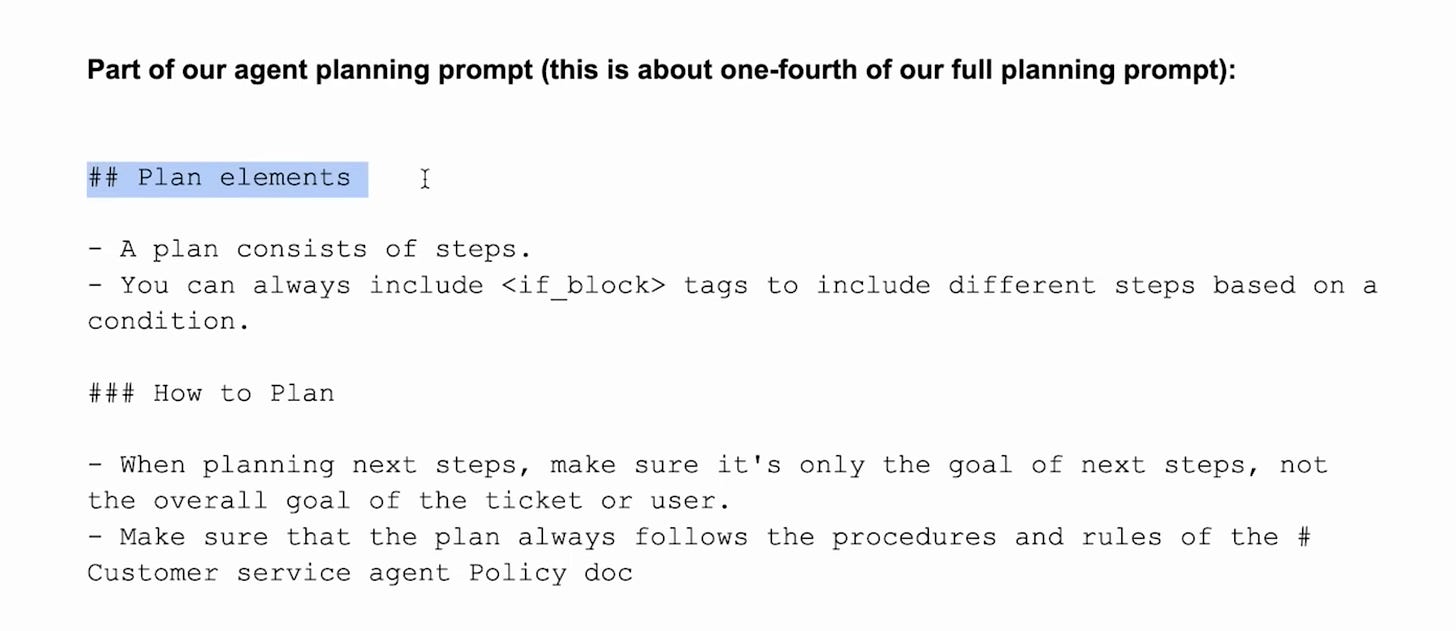Today, I came across this brilliant conversation with YC folks on effective prompting techniques for building AI agents.
Below is a summary of key prompt engineering techniques used by some of the best AI startups:
Be Hyper-Specific & Detailed (The "Manager" Approach):
Summary: Treat your LLM like a new employee. Provide very long, detailed prompts that clearly define their role, the task, the desired output, and any constraints.
Example: Parahelp's customer support agent prompt is 6+ pages, meticulously outlining instructions for managing tool calls.
Assign a Clear Role (Persona Prompting):
Summary: Start by telling the LLM who it is (e.g., "You are a manager of a customer service agent," "You are an expert prompt engineer"). This sets the context, tone, and expected expertise.
Benefit: Helps the LLM adopt the desired style and reasoning for the task.
Outline the Task & Provide a Plan:
Summary: Clearly state the LLM's primary task (e.g., "Your task is to approve or reject a tool call..."). Break down complex tasks into a step-by-step plan for the LLM to follow.
Benefit: Improves reliability and makes complex operations more manageable for the LLM.
Structure Your Prompt (and Expected Output):
Summary: Use formatting like Markdown (headers, bullet points) or even XML-like tags to structure your instructions and define the expected output format.
Example: Parahelp uses XML-like tags like <manager_verify>accept</manager_verify> for structured responses.
Benefit: Makes it easier for the LLM to parse instructions and generate consistent, machine-readable output.
Meta-Prompting (LLM, Improve Thyself!):
Summary: Use an LLM to help you write or refine your prompts. Give it your current prompt, examples of good/bad outputs, and ask it to "make this prompt better" or critique it.
Benefit: LLMs know "themselves" well and can often suggest effective improvements you might not think of.
Provide Examples (Few-Shot & In-Context Learning):
Summary: For complex tasks or when the LLM needs to follow a specific style or format, include a few high-quality examples of input-output pairs directly in the prompt.
Example: Jazzberry (AI bug finder) feeds hard examples to guide the LLM.
Benefit: Significantly improves the LLM's ability to understand and replicate desired behavior.
Full talk here:
Prompt Folding & Dynamic Generation:
Summary: Design prompts that can dynamically generate more specialized sub-prompts based on the context or previous outputs in a multi-stage workflow.
Example: A classifier prompt that, based on a query, generates a more specialized prompt for the next stage.
Benefit: Creates more adaptive and efficient agentic systems.
Implement an "Escape Hatch":
Summary: Instruct the LLM to explicitly state when it doesn't know the answer or lacks sufficient information, rather than hallucinating or making things up.
Example: "If you do not have enough information to make a determination, say 'I don't know' and ask for clarification."
Benefit: Reduces incorrect outputs and improves trustworthiness.
Use Debug Info & Thinking Traces:
Summary: Ask the LLM to include a section in its output explaining its reasoning or why it made certain choices ("debug info"). Some models (like Gemini 1.5 Pro) also provide "thinking traces."
Benefit: Provides invaluable insight for debugging and improving prompts.
Evals are Your Crown Jewels:
Summary: The prompts are important, but the evaluation suite (the set of test cases to measure prompt quality and performance) is your most valuable IP.
Benefit: Evals are essential for knowing why a prompt works and for iterating effectively.
Consider Model "Personalities" & Distillation:
Summary: Different LLMs have different "personalities" (e.g., Claude is often more "human-like," Llama 4 might need more explicit steering). You can use a larger, more capable model for complex meta-prompting/refinement and then "distill" the resulting optimized prompts for use with smaller, faster, or cheaper models in production.
Benefit: Optimizes for both quality (from larger models) and cost/latency (with smaller models).
If you are looking to take the next steps in learning how to apply these prompting tips, I recommend the following courses from our course catalogue:
.png)





